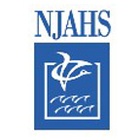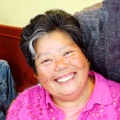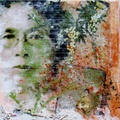>> Part 1
Current Japanese American Attitudes
Intermarriage has been a major, and controversial, topic of discussion within the Japanese American community over the years. The Pacific Citizen has consistently afforded a forum for some of this discussion (particularly the Holiday Issue, December 20-27, 1985). As more and more marriages across culture and race occurred, unresolved questions, opinions and prejudices surfaced.
For many years, people who were of mixed race were seen as a loss to the community. Some people went so far as to state that intermarriage was worse than internment as an assault on the JA community. The assumption in this type of reasoning is that Hapas are automatically not JA culturally, and that Hapas will of necessity be excluded from the JA community. However, interviews of Hapas conducted by the University of Hawai’i indicate that Hapas, in comparison with people with two JA parents, report a stronger sense of identification with both mainstream values and Japanese American ones.
Hapas, Interracial Families and Japanese American Community Identity: Inclusion and Exclusion
It is difficult for many Hapas to overcome the long history of rejection by individual families and by the community. Broken connections and communications in extended families and within the community remain part of the human and emotional struggle for some Japanese Americans. However, many families have found new ways of re-connecting after intermarriages, discovering that change is difficult but not impossible. We have heard many stories about how grandchildren have been one way that extended families have remembered their roles in passing on traditions, and begun processes of reconnecting.
But these experiences and stereotypes are changing as Hapas and their families become a larger and more accepted and active part of the JA community. Steve Shigematsu-Murphy, a psychologist and researcher now living and teaching in Japan, once wrote (Pacific Citizen, 1985): “Can interracial be included in the definition of Japanese American?… Let’s hope that someday, a Bill Smith, with brown hair and green eyes, who has been called ‘Jap’ and blamed for Pearl Harbor and who cares deeply about his Japanese heritage, can say with ease and prideful assurance, ‘I am Japanese American.’”
Since 1980, an increasing number of interethnic marriages to other Asians have occurred. Incorporating other Asian ethnicities within Japanese American families and the JA community has its challenges and potential for stirring up old conflicts and rivalries. However, as the stigma against interracial and interethnic marriages and people has begun to lessen, it appears that the Japanese American sense of itself, either as individuals or as a community, is being gradually replaced by more-inclusive models of identity and identity formation. That the JA community can embrace a more multiracial and multicultural perspective of itself can mean that it could never “die out,” as critics of intermarriage have warned. However, a consciousness about the dangers of assimilation (within areas as complex as class, white culture, the global marketing of brand-names, etc.) requires all cultural groups to remain inclusive, yet continually measuring, cherishing and passing on traditions, ceremonies, languages and histories.
Community organizations and events (community centers, churches, national organizations, basketball leagues, Cherry Blossom queen events, JACL, etc.) have taken into consideration the inclusion of both Hapas and their families as participants and as members of the community, initially with some trepidation, fear and rigidity. The previously hotly-contested rules about parentage in JA basketball leagues and in the selection of Cherry Blossom queens have provoked much upset and have symbolized the stance of various JA communities on inclusion or exclusion of Hapas. These ancestry rules are still in effect in most Nikkei communities. They are literally the lines within the community which are drawn in a very public way to determine who is and who is not JA “enough” to participate in these community organizations. Basketball recently is largely accepting of anyone with any “drop” of JA ancestry as JA. Pageants are still using the 50% rule in San Francisco and Los Angeles, but in Hawai’i you must be 100%. Some organization (the Center for Japanese American Studies, now defunct, for one) have always included Hapas, consistently researching Japanese American community attitudes and behaviors and opening up difficult topics for self-understanding.
The Hapa Issues Forum was originally formed to unify and represent more of a collective mixed JA identity, with the goal of participating in traditional JA community organizations and helping them address the issues of Hapas. This organization has been successful in increasing Hapa participation in organizations within the Japanese American community.
The Future as a Community That Includes Hapas and Their Families
A panel discussion at a Center for Japanese American studies conference in 1985 raised the question “What is Japanese American? Can interracial be included in that definition?” Since that time, there has been major change in accepting Hapas and their families, seeing them more as resources and as a bridge to the future of a strong JA community. A changing cultural climate has also allowed expanded definitions of who each of us are, so that “Japanese American” can include a more multicultural sense of racial/ethnic identity and group membership. For instance, we are more able to accept that we can belong to more than one identity group and that, as JAs, we recognize and are growing to accept a wider diversity among us that includes Shin-Issei (postwar immigrants), wives of U.S. servicemen, Kibei and Hapas.
Conclusion
Mixed-race people and interracial families need to be recognized, welcomed and supported as vital assets to the whole community. Interracial couples consistently deal with one or the other being an “insider”, while the other feels like an “outsider” within their separate ethnic and racial communities. If the insiders are sensitive to and welcome the outsider, chances increase that the insider’s customs, traditions and values will be incorporated into the couple’s lives and passed on to their children.
What Hapa children need most growing up is an actively communicated sense of recognition, acceptance and support about the fact that they do have two or more separate and valuable heritages. Family and community communication about the realities of being interracial are essential to positive identity development. The JA community is not shrinking if we widen the definition, from a monoracial version of Kibei/Issei/Nisei/Sansei/Yonsei, to a more inclusive multiracial acceptance of the generations and of a Nikkei community, that includes all Shin-Issei, Hapas and their parents and families. Purity of blood in any ethnic group has never been a reliable measure of commitment or involvement. If Japanese American culture, traditions and the valuing of its history are to survive, they will be passed on by all the members of the varied Japanese American community.
*This article was originally published in Nikkei Heritage Vol. X, Number 4, (Fall 1998) , a journal of the National Japanese American Historical Society .
© 1998 National Japanese American National Museum









